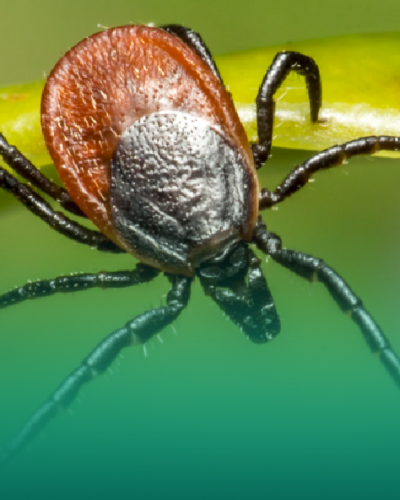Myth: Ticks only live in deep forests
It doesn’t matter to ticks whether you’re in a forest or a park. They prefer damp places such as ravines, shady meadows, lawns and thickets near water bodies. Ticks hide in the grass, sit on the top of plants and wait for their prey. Even in summer cottages, vegetation such as tall weeds can pose a hazard during tick season. Near forests, regular lawn cleaning is recommended, as ticks prefer tall grass.
Myth: Dark clothing will protect you from tick bites
Although this myth is widespread, ticks are actually color blind. Their vision is too primitive for this. On the contrary, it is recommended to wear light-colored clothing when visiting nature. This will not affect the behavior of the ticks, but the parasite will be more visible against a light background. Try to minimize exposed skin and inspect yourself carefully after walking.
Myth: If you remove a tick right away, it will not have time to transmit the infection
It only takes a few minutes to transmit the infection. The tick plunges its proboscis into the human skin and secretes saliva. If the tick is infected, viruses or bacteria enter the blood along with saliva. For example, Borrelia bacteria, which cause Lyme disease. After this, the tick begins to feed on blood, and bacteria multiply. Infection can occur any time a tick attaches itself to the skin, which can sometimes be difficult to detect.
Myth: I was bitten by a tick, but I feel OK. So everything is fine!
Even if the tick was removed several days ago, the absence of symptoms does not guarantee that an infection will not occur. The incubation period for tick-borne infections can last up to 30 days or even several months. Even if symptoms do not appear, this does not mean that the disease will be mild. Therefore, it is important to consult a doctor and undergo appropriate tests in any case.
Myth: Vaccination against ticks protects from against any danger
This is only partly true. Vaccination can protect against tick-borne encephalitis. However, ticks carry a variety of infections, such as Lyme disease, human monocytic ehrlichiosis, human granulocytic anaplasmosis, Crimean hemorrhagic fever, tularemia and tick-borne relapsing fever. All these diseases can be accompanied by complications and even lead to death.
Myth: You can remove a tick yourself
There are many traditional methods for removing ticks, but oil or alcohol does not kill the parasite instantly. When the tick begins to choke, it can go deeper into the skin. To safely remove a tick, use tick tweezers.
Myth: Ticks must be submitted to a laboratory
Whether or not a tick should be tested is controversial. According to the Sanitary Rules, it is recommended to have ticks tested. However, in Europe and the USA it is recommended to burn or tape the tick and flush it down the toilet without further diagnostics. It is important to monitor symptoms closely.
– Test results may be ambiguous: false positive or false negative. Moreover, if a tick was infected, this does not guarantee that the person became infected. It is important to consult a doctor, especially if the bite occurred in an endemic area and the tick bite lasted more than 12 hours.






